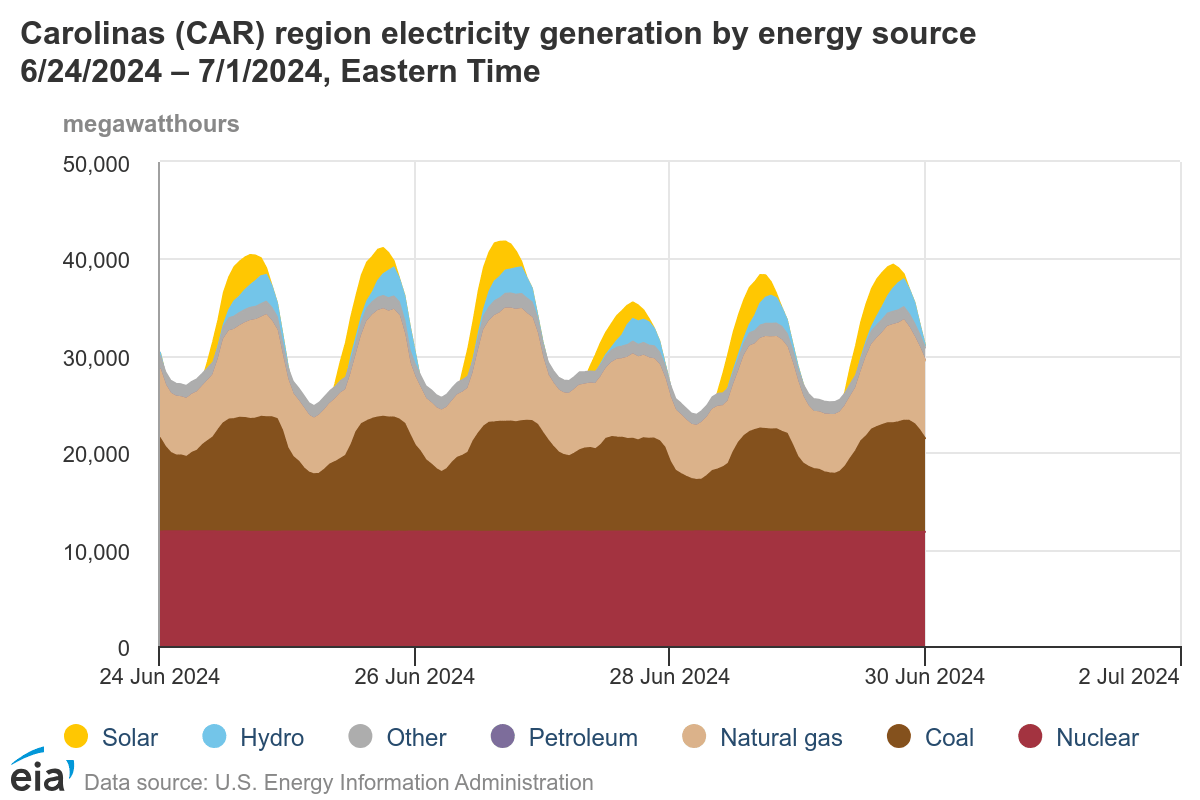Monopoly Area Monday
Welcome to Grid Brief! Today, we’re looking at power generation in America’s traditional monopoly areas with relevant news items. Scroll to the end for great conversation starters about high-performing stocks, data center taxes, and transcontinental power dreams.


A heat wave in June pushed hourly peaks across the Eastern Interconnection to record highs. The connection peaked at 502,670 megawatts (MW) in a single hour on June 21, compared with the hourly June peak of 467,609 MW in 2023.
And here’s a map to orient you as we move through the areas:

Northeast


As temperatures fell back into the 60’s and 70’s, most of New England’s power demand fell too. The falling demand means that hydro and wind were able to make up a more significant portion of the total production and gas plants spun back down.
Carolinas

The Carolinas saw demand peak over 40,000 megawatthours as average temps neared 90-degrees and precipitation was scarce.
Tennessee (TVA)

TVA is meeting demand with continued nuclear production with gas and hydro providing needed peak support. Currently TVA can produce 32,000 megawatthours of power with the ability to purchase another 5,000 as needed. Leadership this week confirmed their goal of expanding to produce 38,000 megawatthours in the next decade.
Southeast

The Southeast saw electricity demand climbing steadily as the heat continues to climb. The demand was met predominantly by natural gas and nuclear power.
Florida

Typical Florida weather and some spring storms kept power generation on par with usual.
Texas (ERCOT)

Record-breaking Texas power demand grew this past week from the prior week but remained steady throughout the week. Houston high temps have hovered between 96 and 100 and aren’t likely to fall for some time. ERCOT forecasts demand would reach 84,251 MW on July 1, which would break the 83,047-MW record for July set in 2023.
Northwest

Early in the week the Northwest saw high demands reaching nearly 60,000 megawatt hours with huge surges in wind power to offset that growing demand. As the week ended, the demand and wind power both fell.
Southwest

Stable temps continue to see a grid built on natural gas thriving.
Conversation Starters
Maryland Data Center 15% Tax. Today a law goes into effect in Maryland that carves 15% of the taxes gathered from state data centers and moves them into the state’s clean energy fund. This effort comes after another law requiring the data centers to purchase 15% of their total electricity from renewable sources in Maryland.
Generac Holdings Strong Performance and Strong Moves. Generac, the company known best for building household and industrial generators, released an earnings report that far-exceeded expectations and led to a huge stock boost. Over the same time, the company has made acquisitions to strengthen it’s grasp on the energy storage market.
WSJ Shines Light on Wild Transcontinental Power Plan. This week, WSJ featured a piece about a plan to power UK homes with Moroccan clean energy. The piece, and this well-built retort are worth reading to prepare for your 4th of July party energy debates.
